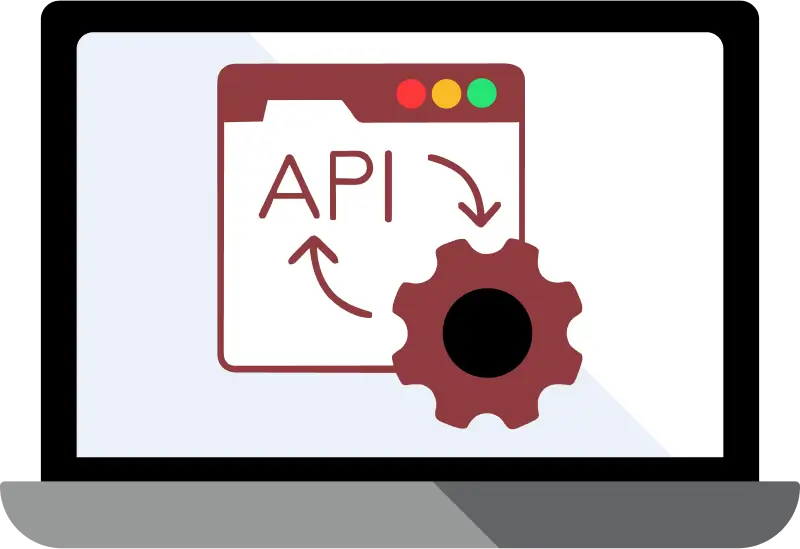What is MongoDB Deep Populate?
API Maker's Deep Populate feature enables advanced nested queries and unified data access across PostgreSQL and other databases, all through a single API call. This eliminates the need for complex JOIN operations and manual relationship handling while providing seamless integration across multiple database systems.
Overview
Deep Populate transforms data retrieval by fetching nested information across tables and databases in a single request. PostgreSQL's robust feature set makes it particularly well-suited for these operations, offering:
- ACID Compliance: Ensures data integrity across complex multi-table queries
- Advanced Data Types: JSONB, arrays, and composite types work seamlessly with Deep Populate
- Query Optimization: Sophisticated query planner and indexing capabilities enhance performance
- Cross-Database Integration: Maintain normalized structures while accessing unified API responses
Core Syntax
API Maker uses standardized JSON syntax for defining Deep Populate relationships:
{
"s_key": "foreign_key_field",
"t_col": "target_collection",
"t_key": "primary_key_field",
"select": "field1,field2,field3",
"isMultiple": false
}
Single-Level Deep Populate
Quickly fetch related data from connected tables in one API call:
Request:
POST /api/gen/postgresql/app/users
Content-Type: application/json
{
"find": {"user_id": 2045},
"deep": [{
"s_key": "user_id",
"t_col": "user_preferences",
"t_key": "user_id",
"select": "theme,notification_settings,privacy_level"
}]
}
Response:
{
"user_id": 2045,
"username": "sarah_dev",
"email": "sarah@company.com",
"created_at": "2024-01-15T10:30:00Z",
"user_preferences": {
"theme": "dark",
"notification_settings": {"email": true, "push": false},
"privacy_level": "standard"
}
}
Multi-Level Deep Populate
Handle complex hierarchical relationships by chaining multiple levels of nested queries. This is ideal for retrieving deeply related data across parent-child-grandchild structures.
Request:
{
"find": {"transaction_id": 12345},
"deep": [{
"s_key": "account_id",
"t_col": "accounts",
"t_key": "account_id",
"select": "account_number,balance,account_type",
"deep": [{
"s_key": "customer_id",
"t_col": "customers",
"t_key": "customer_id",
"select": "full_name,customer_since,status"
}]
}]
}
Response:
{
"transaction_id": 12345,
"amount": 2500.00,
"transaction_date": "2024-08-07T14:30:00Z",
"accounts": {
"account_id": "ACC-789012",
"account_number": "****3456",
"balance": 15750.25,
"account_type": "checking",
"customers": {
"customer_id": 5678,
"full_name": "Michael Johnson",
"customer_since": "2019-03-15",
"status": "active"
}
}
}
Cross-Database Deep Populate
Break the boundaries of single-database querying. Deep Populate enables unified access to data spread across PostgreSQL, MongoDB, and other systems—without writing multiple queries or joining APIs manually.
Request:
{
"find": {"customer_id": 5678},
"deep": [{
"s_key": "customer_id",
"t_instance": "mongodb_analytics",
"t_db": "customer_analytics",
"t_col": "behavioral_data",
"t_key": "customer_id",
"select": "purchase_patterns,engagement_score,segment"
}]
}
Response:
{
"customer_id": 5678,
"full_name": "Emma Rodriguez",
"email": "emma.r@company.com",
"account_status": "premium",
"behavioral_data": {
"purchase_patterns": {
"preferred_categories": ["electronics", "books"],
"average_order_value": 156.75
},
"engagement_score": 8.7,
"segment": "high-value"
}
}
PostgreSQL-Specific Features
JSONB Integration: PostgreSQL's JSONB data type works seamlessly with Deep Populate, enabling efficient storage and querying of semi-structured data within relational structures.
Composite Types: Create custom data types representing complex business objects that Deep Populate can navigate effectively.
Advanced Indexing: Utilize composite and partial indexes on foreign key relationships to optimize Deep Populate query performance.
Performance Optimization
Tip: Use PostgreSQL’s
EXPLAIN ANALYZEto identify performance bottlenecks in nested queries.
- Indexing Strategy: Create composite indexes on foreign key relationships used in Deep Populate queries
- Connection Pooling: Use PgBouncer for efficient connection management under high load
- Query Analysis: Leverage PostgreSQL's EXPLAIN to identify and resolve performance bottlenecks
- Read Replicas: Distribute query load while maintaining data consistency
API Methods Support
Deep Populate works across all generated API methods:
- GET: Rich data retrieval with nested information hierarchies
- POST: Create complex record structures in single transactions
- PUT/PATCH: Update nested data while maintaining referential integrity
- DELETE: Handle cascading deletions safely across relationships
Security Considerations
- Row-Level Security: PostgreSQL's RLS integrates with Deep Populate to automatically filter data at the database level
- Role-Based Access: Implement layered security through both PostgreSQL roles and API Maker's RBAC
- Input Validation: Built-in validation ensures Deep Populate queries conform to expected patterns
Getting Started
- Database Setup: Configure PostgreSQL with appropriate indexing on foreign key relationships
- Connection: Connect PostgreSQL to API Maker with proper user permissions
- Relationship Mapping: Document foreign key relationships for Deep Populate operations
- Testing: Start with simple single-level queries before progressing to complex scenarios
- Monitoring: Use PostgreSQL and API Maker's logging to track query performance
Supported Databases
API Maker's Deep Populate supports multiple database integrations:
- Relational: PostgreSQL, MySQL, MariaDB, Oracle, SQL Server, TiDB, Percona XtraDB
- NoSQL: MongoDB
- Cache: Redis
This multi-database support enables PostgreSQL to serve as your transactional anchor while accessing related data from specialized systems through unified API interfaces.
FAQs
Can I use Deep Populate with PostgreSQL without defining schemas?
Yes, you can use the /api/gen/... endpoint for ad-hoc Deep Populate queries without schemas. However, defining schemas in API Maker enhances performance, enables query validation, and simplifies relationship management.
What happens if a target database is offline or a record is missing?
If a target database is offline, API Maker returns the primary PostgreSQL data with null or empty nested fields. Missing records result in empty arrays or null values, with errors in the response’s errors field.
How many levels of nesting are supported in Deep Populate?
There’s no strict limit on nesting levels. For optimal performance, 3–4 levels are recommended, especially for complex cross-database queries. Use indexing and limit to manage performance.
Does Deep Populate support PostgreSQL’s advanced indexing?
Yes, Deep Populate leverages PostgreSQL’s indexing (e.g., B-tree, GIN) for faster joins. Ensure s_key and t_key fields are indexed to optimize query performance.
How does Deep Populate compare to PostgreSQL’s native JOINs?
Unlike native JOINs, limited to a single PostgreSQL instance, Deep Populate enables joins across different databases (e.g., MongoDB, MySQL) with simpler JSON-based syntax, reducing client-side complexity.
How can I test Deep Populate queries for PostgreSQL?
Use the API Maker Test Console, Postman, cURL, or JavaScript (fetch/axios) to test queries. Start with single-level queries before expanding to multi-level or cross-database operations.
Database and API Platform Comparison
The table below compares API Maker (Deep Populate), Supabase, Appwrite, Firebase, and GraphQL across key features for building modern applications with cross-database capabilities.
| Aspect / Feature | API Maker (Deep Populate) | Supabase | Appwrite | Firebase | GraphQL |
|---|---|---|---|---|---|
| Database Type | Advanced PostgreSQL + multi-DB (MongoDB, Redis) | PostgreSQL | Document DB | NoSQL (Realtime DB, Firestore) | Query language over any backend |
| Nested Queries | Deep, cross-DB nested SQL in one call | Nested queries, real-time support | Document queries, less SQL focus | Limited joins, sync focus | Precise nested queries, client-driven |
| Cross-DB Support | Native across different DBs | Limited, mainly PostgreSQL | Not supported | Not supported | Possible with manual federation |
| API Generation | Auto-generated REST, customizable & deeply nested | Auto REST/GraphQL APIs, edge functions | REST APIs, serverless functions | SDKs, manual API creation | Schema-driven, manual resolvers |
| Real-Time | Event triggers for sync & automation | WebSocket-based real-time | Real-time subs, cloud functions | Realtime sync, messaging | Subscriptions, needs backend setup |
| Security | PostgreSQL RLS + API Maker RBAC | RLS, auth, MFA | Built-in auth, granular permissions | Firebase Auth, social, MFA | Depends on backend/schemas |
| Developer Experience | Low-code, Git deploy, tests, caching, monitoring | CLI, dashboard, client libs | Open-source SDKs, CLI, multi-platform | SDKs, managed, easy integration | Highly flexible, more backend setup |
| Performance/Scalability | PostgreSQL indexing, pooling, replicas | Managed Postgres, replicas, CDN | Scalable open-source | Google Cloud scale | Depends on backend setup |
💡 Want to see Deep Populate in action? Try it live on the API Maker Playground or explore the Getting Started Guide.



